Program 2024
| Cliquer ici pour la version française | ||||
| Program | Register | Accommodation | Travel/Tourism | Sponsors |
Watch this page for program updates!
(this program is preliminary and subject to change)
Friday June 14
|
Morning |
|
|
Afternoon |
CACB Oral Exams |
Saturday June 15
|
Morning |
CACB Oral Exams |
|
Afternoon |
CACB Oral Exams |
Sunday June 16
|
Morning |
CACB Oral Exams CSCC Council |
|
1300-1500 |
Fun Walk/Run |
|
Afternoon |
CACB Oral Exams CSCC Council CACB Board of Directors |
|
1700-1800 |
Lightning Talks The theme of this year’s lightning talks is “What is your Why?”. Speakers from both CSCC and SQBC will share stories about why they chose a career in Clinical Biochemistry, why they love this career, and/or why they are inspired to make changes in the field. In this quick and visual format, it promises to be a fun and interactive event with our SQBC colleagues, so please plan to join this session before heading to the opening keynote address. |
|
1815-1830 |
Opening Ceremonies |
|
1830-1930 |
Opening Keynote – “The Chemistry of Alcohol” and the “The Chemistry of Love” |
|
1930-2200 |
Opening Reception |
Opening Keynote – 1830-1930
“The Chemistry of Alcohol” and the “The Chemistry of Love”
Attend a scientifically informative and entertaining conference by Normand Voyer that delves into various questions related to alcohol consumption, including why alcohol makes you drunk, whether some people are more sensitive to its effects, and the potential disparities between the impact of champagne and wine. Explore intriguing topics such as the influence of hearty foods like poutine on sobriety, effective methods to avoid hangovers, and the reputed aphrodisiac properties of port wine. Additionally, discover the chemistry behind love at first sight and chocolate in an interactive and playful conference. Normand Voyer will explore questions such as the existence of love at first sight, the potential aphrodisiac effects of perfumes, the secrets to enduring love, and the scientific explanations behind relationship dynamics like monogamy, polygamy, and the effectiveness of contraceptives. These thought-provoking discussions have left no one indifferent, engaging in the captivating realm of chemistry and human relationships. This engaging conference has been successfully delivered over 450 times, reaching more than 65,000 individuals of and allowing them to grasp the significance of chemistry in everyday life while fostering discussions on science and academic perseverance.
Normand Voyer
Renowned for his interactive lecture-performances, both entertaining and informative, Normand democratizes love, alcohol, or even mosquitoes through chemistry! Normand Voyer, award-winning science popularizer, outstanding professor, and renowned chemist, has developed several unique one-hour lectures over the past decade, focusing on topics that intrigue us all, including alcohol and, of course, love! His humor and quick wit enable him to deliver personalized presentations to each audience. Normand has delivered over 400 lectures, in addition to his teaching and cutting-edge research at Laval University, and his numerous media appearances as a regular columnist on Salut Bonjour on TVA, Dessine-moi un matin on Ici Première de Radio-Canada, and FM98.5 in Montreal, to name a few!
Monday June 17
|
0730-0830 |
Committee & SIG Meetings |
|
0900-1200 |
Symposium 1 – IFCC Expert Insights on Quality improvement in Laboratory Medicine and Patients’ Safety |
|
1200-1400 |
Lunch & Exhibit Viewing |
|
1400-1500 |
Industry Workshops
|
|
1500-1600 |
Best Poster Presentations |
|
1600-1700 |
Industry Workshops
|
|
1700-1900 |
Wine & Cheese Reception & Exhibit Viewing Poster Viewing (posters staffed 1700-1800) |
Symposium 1 – 0900-1200
IFCC Expert Insights on Quality improvement in Laboratory Medicine and Patients’ Safety
When patients’ safety depends on our capacity to record and report laboratory errors
Pieter Vermeersch, Belgium, member of the WG-LEPS and Chair of the Post-Analytical WG of the EFLM
The pre-analytical phase is the most important source of errors in the total testing cycle. Pre-analytical errors can render the results worthless and can have a detrimental effect on a patient’s health.
Although the pre-analytical phase is mostly performed outside of the laboratory environment, the clinical laboratory has a major responsibility in decreasing vulnerability to these errors. ISO15189:2022 requires that laboratories check the suitability of samples upon reception and indicate any pre-analytical non-conformities on the lab report. Pre-analytical non-conformities include problems regarding identification, sample quality (e.g. stability) and interference due to hemolysis, icteria, and lipemia (HIL). Systematic error monitoring and registration and monitoring of pre-analytical quality indicators is important for continuous quality improvement.
Laboratory medicine professionals should carefully consider how to report the impact of pre-analytical non-conformities on laboratory test results. Hemolysis and lipemia can for example be an artefact of sample collection, but can also reflect a clinically important pathologic state. Not reporting any result in case of hemolysis or lipemia can result in a missed diagnosis of a potentially life-threatening severe hyperkalemia or hypertriglyceridemia. As not all parameters are equally susceptible to interference by hemolysis, icteria and lipemia, it is recommended to indicate on the laboratory on a test by test basis which results are impacted by the non-conformity.
One of the challenges for the coming years is standardized coding of non-conformities and their impact on laboratory test results as more and more data are exchanged electronically both nationally and internationally. The transmission of test results between countries for routine patient care using a different national databases and different languages as envisioned by the European health data space poses a particular challenge. Without standardized coding essential information about pre-analytical non-conformities and their impact on test results could be lost in translation. An effort is currently underway to develop terminology in LOINC and SNOWMED-CT.
Learning Objectives – at the end of this presentation participants will be able to:
- Discuss the frequency and impact of errors in the pre-analytical phase.
- Convince laboratory professionals to systematically record sample non-conformities and report the impact on laboratory test results.
- Explain the need to code sample non-conformities and include this coded information in the electronic exchange of laboratory test results.
Sharing the insight on the Brazilian program of Quality Indicators Comparison
Wilson Shcolnik, Brazil, member of the WG-LEPS of the IFCC, representative of the Brazilian Program of Quality Indicators
As insights, the strategies for recognizing and valuing the indicator program in Brazil will be addressed; Brazil’s participation in the harmonization initiatives promoted by the IFCC Work-Group Laboratory Errors and Patient Safety, as well as the evolution of the indicator platform. Still existing challenges will be discussed, such as the integration of indicators data with laboratory information systems and the continuing education of laboratory professionals in indicator management, as well as potential actions to overcome them. Some relevant differentials of the Brazilian program will be presented, highlighting an expanded scope of indicators, which includes strategic dimensions to contribute to the sustainability of laboratories, as well as initiatives to deepen indicators within specific disciplines, such as indicators in laboratory microbiology.
Learning Objectives – at the end of this presentation participants will be able to:
- Outline the Brazilian clinical laboratories and the health system.
- Discuss existing regulatory requirements (which include structuring a quality system).
- Discuss clinical laboratories’ adherence to accreditation and laboratory indicators programs, as well as the results obtained.
Implementing the WG-LEPS guidelines to the national level, the Indian experience
Sohini Sengupta, India, member of the WG-LEPS, Member of the IFCC POCT Committee
The Indian medical diagnostics segment has been able to provide access to modern diagnostics facilities even to people living in remote areas. The total number of clinical laboratories in India is estimated to be over hundred thousand, which includes hospital and stand-alone labs, national and regional chains. However, this sector is fragmented and non-standardized, with only 1985 laboratories presently accredited by the NABL, the national accreditation body for medical laboratories. The use of quality indicators for evaluating the different phases of laboratory testing was therefore initially very limited. However, the number of accredited labs is increasing rapidly and the number of those with NABL accreditation has increased at a CAGR of around 20% between 2012–2017. In the next 5 years, many more laboratories in the country are expected to opt for accreditation. Test quality has improved over the years with more automation and more sophisticated tests being performed.
Consequently, awareness about quality indicators as a measurement of performance metrics is gradually increasing. The process of monitoring quality indicators is, however, still planned by individual laboratories, and while all strive to cover the total testing process, there is still enormous variation in the indicators they use. The periodic review of indicators to ensure their continued appropriateness is also limited.
Results from review of quality indicator data shows that in India too, 70% of errors tend to occur in the pre-analytical phase, important causes being improper registration, and temperature deviation during transport (particularly in the hub & spoke model), resulting in increased rejection of samples. Errors in the analytical phase are minimal, while the principal concern in the post-analytical phase is transcription errors, and compliance with turnaround times. Still, there remains a significant gap in capturing real-world data, due to differences in the choice of indicators or methodologies of data collection used. Efforts are being made to involve the national society and accreditation bodies in disseminating the WG-LEPS guidelines and standardize the use of quality indicators and process of data capture.
Learning Objectives – at the end of this presentation participants will be able to:
- Discuss standardization of the use of Quality indicators in India according to the guidelines of the IFCC WG-LEPS.
- Discuss monitoring its performance and review its continued appropriateness in the Indian context.
- Promote involvement of the National Society and accreditation bodies to increase compliance of clinical laboratories to the WG-LEPS guidelines.
Industry Workshops – 1400-1500
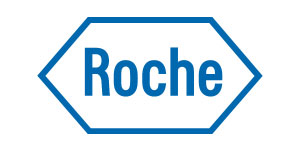 A. Roche Workshop – Biochemistry Community of Practice and Peer Discussion
A. Roche Workshop – Biochemistry Community of Practice and Peer Discussion
(1) Information solutions
Dr Philippe Mills, Clinical Biochemist, CIUSSS de la Mauricie-et-Centre-du-Québec
With middleware capabilities rapidly evolving, utilization & use cases are changing. From black box or pass through to fully deployed as a workflow optimization tool and LIS contingent, there is a wide range of uses across the country. What can we learn from first users?
(2) Simplified validation
Dr Dana Bailey, Clinical Biochemist at Mount Sinai Hospital
On average, the validation of a new instrument happens every 5 years, following RFP or contract extensions. Setting up such processes can take time, especially considering limited lab resources. What can be done to accelerate and simplify validation processes, could tools like EP Evaluator be leveraged nationally?
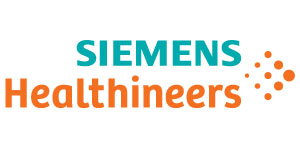 B. Siemens Healthineers Workshop – Making the Most of People and Technology: A Combination that Improves Patient Care
B. Siemens Healthineers Workshop – Making the Most of People and Technology: A Combination that Improves Patient Care
Speaker: Eric Bonneau, PhD, DEPD, CSPQ, FCACB, Biochimiste Clinique
The current reality in medical laboratories in Quebec is the same everywhere: we must do more with less. With an increasing volume of laboratory analyzes in a simultaneous context of staff shortages and restricted accessibility to full automation, how can laboratories adapt? The simplest solution involves fine-grained mapping of laboratory processes in order to optimize valuable human resources and maximize the use of technology functionalities.
 C. Beckman Coulter Workshop – Next Generation Immunochemistry Instrumentation – Introducing the Beckman Coulter DxI 9000 Analyzer
C. Beckman Coulter Workshop – Next Generation Immunochemistry Instrumentation – Introducing the Beckman Coulter DxI 9000 Analyzer
Presenter: Corey Carlson, PhD, Senior Development Scientist, Beckman Coulter, Chaska, NM
The DxI 9000 is a new generation of immunochemistry analyzer with a focus on sensitivity and time to first result. The increased level of sensitivity available opens the door for next generation immunochemistry assays that would not be feasible with traditional immunochemistry analyzers. Reducing assay analysis time with the new Lumi-Phos PRO substrate comes which comes to full glow in under one minute. Improving quality assurance with new novel machine vision technologies notifying users of processing errors in real time.
Learning Objectives:
- A better understanding of what can be achieved with the increased sensitivity provided with the DxI 9000 immunochemistry analyzer.
- A detailed description of the new substrate, Lumi-Phos PRO signal to dose reaction mechanisms and kinetics will be discussed.
- A case study of high sensitivity troponin analysis will be described with a focus on minimizing endogenous ALP and non-specific binding interferences.
- How to describe how a precision vision technology utilizing multiple cameras with defined algorithms can improve the quality assurance of results in real time and trigger corrective actions immediately.
- New assay development in the areas of neurodegenerative disease and infection will be presented.
 D. Sebia workshop – Unraveling HbA1c: Insights, Analysis, and Variants
D. Sebia workshop – Unraveling HbA1c: Insights, Analysis, and Variants
Speaker: Youssef Massamiri, PhD FCACB SQPC, Provincial Division Head for Clinical Biochemistry, Clinical Chemist, Health Science Centre, Laboratory Medicine Program, St. John’s, Newfoundland
In this presentation, we will delve into the intricacies of Hemoglobin A1c (HbA1c), exploring its significance, testing methodologies, and considerations in the presence of variants.
- The What: What is HbA1c and its clinical significance?
- The Why: Why is HbA1c testing essential in diabetes management?
- The How: How do we accurately test HbA1c and navigate through variant interferences?
Learning Objectives:
- Understanding HbA1c as a Vital Marker for Diabetes Management.
- Differentiating Between Commonly Used HbA1c Testing Methods.
- Addressing Limitation of HbA1c Testing Due to Biological Interferences.
- Exploring a Case Study of Unexpected HbA1c Results.
Industry Workshops – 1600-1700
 E. Roche Workshop – Biochemistry Community of Practice and Peer Discussion
E. Roche Workshop – Biochemistry Community of Practice and Peer Discussion
(1) Quality Control
Dr. Jennifer Shea, Clinical Biochemist at Horizon Health Network
Quality control is an integral part of Lab operation, while its frequency can depend on the environment, volume, and test panels, a risk assessment-based approach could unify practices across labs. What gains and learnings can follow an evolution of QC practices?
(2) Alzheimer’s biomarkers
Dr Adrian Budhram, Clinical Lead Neurology at London Health Sciences
With renewed hope for disease-modifying therapy, more clinical laboratories are supporting early identification of Alzheimer’s Disease. Inviting the clinician experience to help further access dementia diagnosis and management, we will discuss some of the barriers to larger adoption.
 F. Siemens Healthineers Workshop – Improving the robustness of our medical laboratories through automated monitoring of our processes using APM
F. Siemens Healthineers Workshop – Improving the robustness of our medical laboratories through automated monitoring of our processes using APM
Speaker: Vincent De Guire, Ph.D, DEPD, CSPQ. Biochimiste Clinique, Chercheur Associé CRHMR, Professeur adjoint de clinique, UdeM
Ensuring the quality and monitoring of our processes are crucial for patient safety and required for ISO15189 accreditation. Assessing the robustness of our processes through Key Performance Indicators (KPIs) and Quality Indicators remains challenging as automated tools are lacking. In this presentation, we will explore how APM can greatly facilitate data accessibility and root cause analysis for proactive improvement of our processes.
(1) Mass Spectrometric Approaches to Urinary Metabolic Assessment
Speaker: Dr. Christiane Auray-Blais, Centre Hospitalier Universitaire de Sherbrooke (CHUS)
Translational research using a mass spectrometry approach has allowed us to discover novel biomarkers for various lysosomal storage diseases (QTOF), elucidate the chemical structure of these biomarkers, and develop/validate quantitative methods (tandem mass spectrometry). Our work on the feasibility to perform a technological transfer for the Newborn Mass Urine Screening Program will be presented, as well as the evaluation of other biomarkers for various diseases.
(2) APGC-MS/MS for urine organic acid determination in the evaluation of inborn errors of metabolism
Speaker: Dr. Lori Beach, IWK Hospital
Urine organic acid analysis is a key diagnostic tool when assessing a patient suspected to have an inborn error of metabolism (IEM). Several hundred organic acids, arising from both normal and abnormal metabolism, as well as metabolism of drugs, xenobiotics and dietary supplements, are present in urine. Traditionally, extracted and derivatized metabolites are detected by electron impact (EI) ionization gas chromatography-mass spectrometry (GC-MS) with total ion collection. We have developed an approach using atmospheric pressure GC-tandem MS for urinary organic acids and have implemented its use in the biochemical genetics clinical laboratory.
Tuesday June 18
|
0730-0830 |
Industry Workshops
|
|
0900-1200 |
Symposium 2 – Applications of Artificial Intelligence in Clinical and Laboratory Medicine |
|
1200-1330 |
Lunch & Exhibit Viewing |
|
1330-1430 |
|
|
1430-1500 |
Break & Exhibit Viewing |
|
1500-1630 |
|
|
1630-1730 |
CSCC Annual General Meeting CSCC Town Hall |
|
1730-1830 |
CACB Annual General Meeting |
|
1830-2300 |
Presidents’ Reception Gala Banquet |
Industry Workshops – 0730-0830
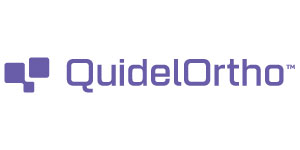 A. QuidelOrtho Workshop – Exploring the integration and efforts of the Triage PLGF test: a customer’s perspective
A. QuidelOrtho Workshop – Exploring the integration and efforts of the Triage PLGF test: a customer’s perspective
Speaker: Dr. Yee Ping Teoh, Consultant in Chemical Pathology & Metabolic Medicine, Clinical Lead in Pathology, Betsi Cadwaladr University Health Board, North Wales, UK
Learning Objectives – at the end of this presentation participants will have had an opportunity to:
- Discover effective implementation strategies and workflow for the Triage® MeterPro® and Triage PLGF test.
- Explore user experiences of the Triage PLGF test in laboratory settings.
- Gain insight into customer perspectives on the impact of clinical pathways.
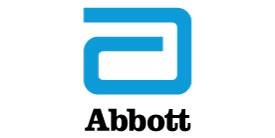 B. Abbott Workshop – Novel blood tests for ruling out intracranial lesions in mild traumatic brain injury
B. Abbott Workshop – Novel blood tests for ruling out intracranial lesions in mild traumatic brain injury
Speaker: Dr. Jaime Marino, Associate Director, Medical Affairs, Abbott
Join us in this engaging session as we review the current state, outline new evaluation tools, discuss recently published research, and outline the importance of brain biomarkers and how they will help address unmet needs in the evaluation and assessment of patients suspected of mild traumatic brain injuries.
Learning Objectives – at the end of this presentation participants will be able to:
- Understand the current landscape of the mTBI.
- Discuss new tools and share recent publications about brain biomarkers.
- Explain the role of brain biomarkers in the assessment of mTBI.
 C. HLS Therapeutics Workshop – One-Year Post-Implementation of the MyCare Clozapine Immunology Assay in HMR: Update on Clinical Benefits and Analytical Performance
C. HLS Therapeutics Workshop – One-Year Post-Implementation of the MyCare Clozapine Immunology Assay in HMR: Update on Clinical Benefits and Analytical Performance
Speakers:
Dr. Vincent De Guire, DEPD, CSPQ, Biochimiste Clinique, Chercheur Associé CRHMR, Professeur adjoint de clinique, UdeM
Philippe Vincent, Pharmacist, M.Sc., BCPP, Institut universitaire en santé mentale de Montréal, Professeur agrégé de clinique, Faculté de pharmacie de l’Université de Montréal, Chercheur associé, CRIUSMM
In this workshop, we present a comprehensive update one-year post-implementation of the MyCare immunological assay for clozapine measurement, focusing on its clinical benefits and performance enhancements. The workshop will delve into the clinical context where the assay has significantly improved patient management with a faster turnaround time in the context of schizophrenia. Updated data on assay validation, including extended linearity verification, accuracy verification through external quality assurance (EQA) programs, and recovery experiments, will be discussed in detail. Furthermore, attendees will gain insights into the impact of inflammatory syndromes on clozapine concentration and the specificity of the MyCare immunological assay in such contexts. This workshop aims to provide attendees with a comprehensive understanding of the ongoing advancements in clozapine measurement technology and its practical implications in clinical settings.
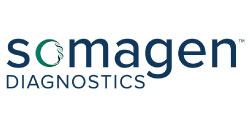 D. Somagen Workshop – What is Calibration Verification?
D. Somagen Workshop – What is Calibration Verification?
Speaker: Jessica Pawlak, LGC Clinical Diagnostics
A discussion about what calibration verification/linearity testing is and how it substantiates the continued performance of a laboratory’s testing systems as part of best practice.
Symposium 2 – 0900-1200
Applications of Artificial Intelligence in Clinical and Laboratory Medicine
Recent advancements in artificial intelligence promise to revolutionize many fields. In clinical and laboratory medicine, artificial intelligence techniques are often used to develop better health prediction models. This symposium will describe how this is generally done while highlighting several applications – including the optimizing of clinical workflows and healthcare operations, and decoding metabolomic data.
Towards Patient-Specific Treatment: Medical Applications of Machine Learning
Russ Greiner, University of Alberta, Edmonton
An effective patient-specific treatment model identifies which treatment has the best chance of success for each individual patient, based on all available information about that patient. Here, we consider the task of learning such models – in general, a learned combination of many features that collectively predict the outcome – from a labeled dataset describing earlier patients, and their outcomes. This presentation introduces the relevant ideas using real-world medical examples, and explains how this machine-learning approach differs from the task of finding individual biomarkers.
Learning Objectives – at the end of this presentation participants will be able to:
- Describe the task of (supervised) machine learning: produce a classifier, from a labeled dataset.
- Explain the difference between association tasks (biostatistics: biomarker discovery) vs prediction tasks (learning: classifiers), and the role of each.
- Outline some machine learning algorithms.
- Explain how to validate a predictor…hold-out set, cross-validation.
- Discuss some examples of medical tasks that have been addressed using machine Llearning techniques.
Artificial Intelligence in Practice: Using Predictive Tools to Expedite Triage and Clinical Workflows
Peter McCaffery, University of Texas Medical Branch, Galveston
This presentation will cover the implementation and experience of using AI in laboratory testing workflows at a large, multi-campus academic medical center. Specifically, this presentation will discuss which tools are used, how they are deployed and monitored, and how output from these tools are used to impact clinical workflows to improve patient care and business operations.
Learning Objectives – at the end of this presentation participants will be able to:
- Review the challenges facing artificial intelligence tools in clinical practice.
- Discuss the opportunities and examples of deployed tools and their associated workflows.
- Describe the practical challenges of monitoring, safety and management of AI tools.
- Illustrate a framework for vetting problems and driving interventions to achieve ROI.
AI and metabolomics: the perfect pairing!
Jacques Corbeil, Université Laval, Montreal
I will present how metabolomics and artificial intelligence can assist in diagnostic, prognostic, treatment follow-up, and, ultimately, drug discovery. We have an assay to test a large panel of metabolites, providing a global view of participants’ states. Moreover, there are technologies using mass spectrometry that can process samples in a high throughput fashion that is amenable to AI interpretation.
Learning Objectives – at the end of this presentation participants will be able to:
- Outline some general principles of using AI in health.
- Demonstrate that metabolomics is an excellent source of data for AI.
- Discuss the role of mass spectrometry in omics and healthcare.
Roundtable Discussions – 1330-1430
There is no charge to participate in Roundtables, however tickets are required and attendance is limited to 10 seats per table.
Roundtable Discussions:
- R1: Enhancing Laboratory Performance through Proficiency Testing Program Design and Challenges
- R2: Plasma pTau 217 as a robust biomarker for the diagnosis and differential diagnosis of Alzheimer’s Disease
- R4: Changing landscape of pharmacogenetic testing
- R5: Comprehensive Serological Evaluation of Autoimmune Encephalitis and Paraneoplastic Syndrome: how to choose the right laboratory test/panel and when to send CSF and/or serum
- R6: Interplay of Metabolic Systems in Cardiovascular Diseases – Unveiling the Clinical Laboratory’s Role in In Vitro Diagnosis
- R7: Validation and monitoring of pneumatic tube systems
- R8: Quality Improvement and Patient-Centered Care: Best Practice Guidelines for Medical Error Disclosure in Canada
- R9: Lessons in the long run: hyponatraemia in marathon runners
- R10: Cases in Pediatric Clinical Biochemistry
- R11: Cannabis, alcohol, inflammasome
- R12: Analytical and clinical considerations in the implementation of preeclampsia testing
R1: Enhancing Laboratory Performance through Proficiency Testing Program Design and Challenges
Leader:
Berna Aslan, NL Health Services, St. John’s
Proficiency Testing (PT) is vital for laboratory quality assurance, serving as a benchmark and catalyst for improvement. This presentation navigates the nuances of PT program design, emphasizing material selection, statistical techniques, criteria establishment, and report creation. Exploring the core of PT program design, delving into the critical aspects of material choice for real-world relevance. Robust statistical techniques will be highlighted for accurate result analysis. Criteria establishment, defining assigned values, and acceptability criteria will be emphasized for consistent evaluation. Crafting informative PT reports will be discussed to facilitate effective communication. High staff turnover in medical laboratories poses a challenge, demanding a continuous focus on training to address proficiency testing and PT issues. Beyond technical skills, the training will encompass understanding the PT program’s design, crucial for upholding quality standards. Case studies will showcase common challenges leading to discordant PT/EQA outcomes. These practical examples will enable participants to apply theoretical knowledge to tangible situations, fostering a deeper understanding of potential challenges. Culminating in practical insights, the presentation will discuss effective corrective and preventive measures derived from the case studies. Participants will gain actionable strategies to enhance proficiency testing performance.
Learning Objectives – at the end of this roundtable participants will be able to:
- Evaluate PT testing results in connection to the PT program design.
- Identify issues before they become significant.
- Perform appropriate discordant finding result investigation when experienced.
R2: Plasma pTau 217 as a robust biomarker for the diagnosis and differential diagnosis of Alzheimer’s Disease
Leader:
Hans Frykman, University of British Columbia-BC Neuroimmunology Lab, Vancouver; US Neurocode Labs
Dementia is the most common type of neurodegenerative disease, with Alzheimer’s Disease (AD) constituting about seventy percent of these cases. It is projected that the number of AD cases in Canada will reach 674,000 people by 2031, nearly doubling from the baseline of 340,000 people living with dementia in the country in 2011. AD is a complex condition with definite pathological findings and various clinical presentations. Its neuropathologic features are defined by amyloid-beta (Aβ) plaques and neurofibrillary tangles with aggregated tau proteins, causing neuroinflammation, reactive astrogliosis, and gradual synapse and neuronal loss with transmitter deficiencies, leading to slow and progressive cognitive impairment. Although an amnestic syndrome with insidious onset and gradual progression is the typical clinical phenotype of AD, an important proportion of cases with AD pathology present with non-amnestic cognitive disorders. Additionally, AD neuropathological cascades start years before the apparent beginning of the clinical symptoms of the disease and spread in a consistent pattern with subsequent neuroanatomical and neurophysiological changes. Therefore, clinical findings of AD are in a continuum but remain heterogeneous from cognitively unimpaired through mild cognitive impairment (MCI) to severe dementia. MCI is a prodromal stage of AD, and patients with amnestic MCI progress to probable AD at a rate of ∼10–15% per year, while 11%–33% of them develop it within the first 2 years. Moreover, AD pathology can frequently co-occur with other neurodegenerative and vascular diseases, and accurate timely differential diagnosis is critical for appropriate care and precise treatment strategies.
Understanding the role of biomarkers in the early diagnosis of AD appears imperative. Pathophysiologic biomarkers, including amyloid PET, and fluid biomarkers such as CSF concentrations of Aβ, tau proteins, and NfL along with plasma concentrations of Aβ, tau, and NfL, helping clinicians recognize and differentiate AD from other types of dementia and neurodegenerative diseases. The CSF Aβ42/Aβ40 ratio measurement is a robust biomarker in detecting cerebral Aβ pathology and AD diagnosis. A noticeable feature of the Aβ42/Aβ40 ratio is that their levels are altered in the preclinical stages of AD. They can identify Aβ pathology with high accuracy in both individuals with unimpaired cognition and patients with MCI. Plasma pTau217 and pTau181 can differentiate AD from other forms of dementia and tauopathies; however, the diagnostic performance of pTau217 is similar to that of both CSF biomarkers, and tau-PET imaging. In several clinical and analytical validations, we showed that plasma pTau217 (AUC 0.92 to 0.93) exhibited enhanced clinical performance compared to pTau181 (AUC 0.81) for diagnosing AD. Notably, plasma pTau217 begins to change earlier than other pTau variants, serving as a useful predictive tool for diagnosing AD in its preclinical stages.
In this round table, we discuss the markers of biological diagnosis of AD based on ATN biological assessment of AD (Aβ, Tau and Neurodegeneration markers). We also explain the different laboratory techniques for detection of these biomarkers and their accuracy based on our several clinical and analytical validation studies.
Learning Objectives – at the end of this roundtable participants will be able to:
- Recognize new technologies and protocols for the detection of AD biofluid biomarkers.
- Discuss accuracy of various biofluid biomarkers in diagnosis and differential diagnosis of AD.
- Determine how plasma pTau as robust biomarker could act as paradigm shift in the prevention and management of AD.
R4: Changing landscape of pharmacogenetic testing
Leader:
Lei Fu, Sunnybrook Health Sciences Centre and University of Toronto, Toronto
Pharmacogenetic (PGx) testing is a fast-evolving and essential tool for personalizing drug therapy based on a patient’s genetic makeup. Several single-gene-drug pair PGx tests have become part of standard care to optimize drug therapy, prevent adverse drug reactions, and improve patient safety. To meet the increasing clinical demand, pre-emptive multigene panel testing would be an ideal strategy to have actionable PGx results ready before prescribing any target drugs. Advancement of next-generation sequencing (NGS) technologies provides opportunities for large-scale PGx studies and pre-emptive PGx testing to cover wide range of variant alleles present in diverse populations. In this roundtable session, we will review the common PGx tests implemented in clinical settings, use cases to demonstrate the effectiveness as well as limitations of current testing methods, and discuss different technologies and future development in PGx testing.
Learning Objectives – at the end of this roundtable participants will be able to:
- Describe the gene-drug pairs commonly implemented in PGx testing.
- Discuss the advantages and limitations of different technologies and testing strategies.
- Explore the future development and NGS-based PGx testing.
R5: Comprehensive Serological Evaluation of Autoimmune Encephalitis and Paraneoplastic Syndrome: how to choose the right laboratory test/panel and when to send CSF and/or serum
Leader:
Pankaj Kumar, University of British Columbia BC Neuroimmunology Lab, Vancouver
Neural autoantibodies (NAbs) in various neurological autoimmune diseases are classified based on the location of their target antigens. One group of NAbs targets cell-surface antigens, including ion channels, water channels, and neurotransmitter receptors. These are linked to conditions such as Autoimmune Encephalitis (AE). The second group of NAbs targets intracellular antigens and is frequently associated with cancer, known as classic paraneoplastic neurological syndrome (PNS). The conventional methods to detect AE/PNS Ab, includes ELISA, immunoblotting, cell-based (CBA) and tissue-based assays (TBA). However, the latest PNS-Care panel has proposed the use of comprehensive testing using the combination of snap frozen tissue-based immunohistochemistry/immunofluorescence (IHC/IFA) assays followed by confirmatory fixed or live CBA and/or immunoblots, depending on the antigen/s. Although the snap frozen rat brain IHC/IFA offers excellent sensitivity and specificity for screening multiple AE/PNS Abs simultaneously, however, due to the complex and labor-intensive protocol (7-day protocol; brain-extraction, fixation, cryopreservation, snap-freezing, and cryo-sectioning) they are currently available in only a few highly specialized neuroimmunology laboratories. In contrast, some clinical laboratories use commercial fixed rat brain sections and CBA kits for detecting AE/PNS AAbs; however, these kits have variable sensitivity and specificity. In this roundtable, we will provide a detailed overview of the lab workflow including in-house preparation of snap-frozen rat brain sections and various testing methodologies used to test NAbs in AE/PNS. We will also present some practical examples to familiarize participants with recommended testing algorithm in suspected pediatric and adult cases and the result interpretations. Finally, we will discuss our recommendations on how to choose the right lab test panel/s and which matrix should be send for testing (e.g. CSF or serum or both).
Learning Objectives – at the end of this roundtable participants will be able to:
- Determine a comprehensive disease-based algorithm for testing NAbs in AE/PNS.
- Identify the laboratory workflow using rat brain IHC/IFA assay in combination with confirmatory testing.
- Discuss the AAb panel/s to choose from and when to send serum or CSF or send both.
R6: Interplay of Metabolic Systems in Cardiovascular Diseases – Unveiling the Clinical Laboratory’s Role in In Vitro Diagnosis
Leader:
Shirley Li, The Ohio State University, Columbus
Interplay of Metabolic Systems in Cardiovascular Diseases-Unveiling the Clinical Laboratory’s Role in In Vitro Diagnosis The recent notable cardiovascular benefits of Wegovy (semaglutide) fortifies our comprehension of the interplay between obesity and cardiovascular disease (CVD). Nonalcoholic fatty liver disease (NAFLD), a rapidly developing global health concern, share several common risk factors with CVD including obesity, insulin resistance, and type 2 diabetes (T2D). This session will discuss the vital relationship between the liver and heart, focusing on Non-Alcoholic Fatty Liver Disease (NAFLD) as a pivotal connection. Attendees will engage with experts to learn clinical assessment for NAFLD diagnosis and monitoring. Participants will also discover how these factors intricately influence NAFLD progression by investigating lipid and lipoprotein metabolism. Moreover, the session will evaluate cardiovascular disease (CVD) risk in the context of NAFLD using cutting-edge, non-invasive laboratory insights. Through immersive presentations and interactive discussions, attendees will gain invaluable knowledge essential for comprehensive patient care, bridging the liver-heart gap for enhanced cardiovascular-metabolic health.
Learning Objectives – at the end of this roundtable participants will be able to:
- Make a clinical assessment for Non-Alcoholic Fatty Liver Disease (NAFLD).
- Discuss the complexities of lipid and lipoprotein metabolism.
- Navigate cardiovascular disease (CVD) risk rssessment in the NAFLD Context.
R7: Validation and monitoring of pneumatic tube systems
Leader:
Yun Huang, Kingston Health Sciences Center, Kingston
Pneumatic tube systems (PTSs) have been implanted widely in modern hospitals to efficiently and reliably transport blood samples from clinical units to medical laboratories. However, the quality of blood samples delivered by PTSs may be compromised, as reported in many studies. One common concern is the hemolysis of blood samples induced by the acceleration in PTSs. Hemolysis falsely increases the concentrations of certain analytes, such as potassium and lactate dehydrogenase, because their concentrations in blood cells are much higher than in serum or plasma. In addition, hemoglobin released during the process of hemolysis may interfere with the measurement of assays. There are numerous challenges associated with the validation and monitoring of PTSs in current laboratory practice. Although the validation and monitoring of PTSs have been included in the quality management requirements, corresponding practice guidelines have not yet been made available. Traditionally, blood samples from heathy volunteers are used for validation and monitoring purposes, but their source is limited, and they may not adequately represent the quality of blood samples collected from diverse patient populations. Moreover, the design and distribution of PTS routes further complicate matters, as they may vary significantly among hospitals. PTSs in different hospitals may contain dozens or even hundreds of routes connecting clinical unites to laboratories.
Learning Objectives – at the end of this roundtable participants will be able to:
- Discuss accreditation requirements.
- Identify available material or tools.
- Discuss primary protocols.
R8: Quality Improvement and Patient-Centered Care: Best Practice Guidelines for Medical Error Disclosure in Canada
Leader:
Jay Kalra, Royal University Hospital, Saskatoon
The prevalence of medical errors in healthcare systems has significantly compromised the quality of healthcare delivery. Prioritizing patient safety and system improvement over punitive measures for healthcare providers is crucial to address the emerging concern of healthcare quality worldwide. The emerging concern for healthcare quality worldwide persists despite efforts to minimize adverse events and medical errors. We have previously reported that international policies and the Canadian Provincial College of Physicians and Surgeons both encourage the open disclosure of adverse events and have suggested its integration into a ‘no-fault’ model. Disclosure policies can provide a framework and guidelines for appropriate disclosure, leading to more transparent practices. The issue of honest disclosure of a medical error to the patient or their family has been relatively unattended. We have also evaluated medical error disclosure policies based on the inclusion of the following key points: an apology or expression of regret, some form of patient support, avoidance of blame, provider support, and avoidance of speculation. Effective communication between health care providers, patients and their families throughout the disclosure process is integral in sustaining and developing the physician patient relationship. The complexities of medical error disclosure to patients present ideal opportunities for medical educators to probe how learners are balancing the ethical complexities involved in error disclosure with other related fields. Designing best practice error disclosure policy requires integrating many aspects, including bioethics, physician-patient communication, quality of care, and team-based care delivery. We suggest implementing a uniform national policy that addresses errors in a non-punitive manner and respects the patient’s right to an honest disclosure. Not only should disclosing medical errors be a routine part of medical care to enhance quality improvement, but it would also protect patients’ health and autonomy.
Learning Objectives – at the end of this roundtable participants will be able to:
- Define the concept of medical error, quality care/patient safety in health care.
- Identify magnitude, scope and epidemiology of medical error in health care and laboratory medicine.
- Identify dilemma of error/adverse event and ethical issues: the concept of disclosure.
- Discuss current national and international disclosure policies.
- Examine Canadian provincial and territorial health region policies and guidelines.
R9: Lessons in the long run: hyponatraemia in marathon runners
Leader:
Robert Moore, Canadian Memorial Chiropractic College, Toronto
Based on dubious research long distance runners were advised to hydrate during competition. This has led to at least a dozen deaths from collapsed marathon runners being medically treatment inappropriately. For those who survive there may be irreversible brain damage due to extrapontine demyelination. Laboratory measurements can have a significant role in differential diagnosis and minimizing the risks of improper treatment. Guidelines have been developed for safer hydration during distance events. This has implications for the treatment of hyponatraemia in hospitalized patients. The incidence of this is said to be of the order of 20-30% in the USA. Even moderate hyponatraemia has an effect on activities of daily living leading to hospitalization. Surgery, some common drugs and infections can worsen hyponatraemia to a dangerous extent. The presenter welcomes hearing of your experience and opinions on this topic.
Learning Objectives – at the end of this roundtable participants will be able to:
- Identify at what level would the clinician expect to see the symptoms of hyponatraemia? There are acute and chronic forms of the disease.
- Explain pseudo hyponatraemia – a laboratory error seen with direct electrode measurement of plasma sodium.
- Discuss possible causes of hyponatraemia and laboratory support for differential diagnosis.
- Describe damage caused by hyponatraemia, especially extrapontine demyelination.
- Discuss laboratory support to minimize the risks of inexpert treatment.
R10: Cases in Pediatric Clinical Biochemistry
Leader:
Lawrence de Koning, University of Calgary and Alberta Precision Labs, Calgary
Pediatric clinical biochemistry is an extremely stimulating area of laboratory medicine. The dynamic, ever-changing physiology of children can lead to surprising and unusual results which can challenge the comfort levels of clinical biochemists. This roundtable will review several cases identified during review of critical results at the Alberta Children’s Hospital Rapid Response Laboratory. These cases will focus on laboratory errors, analytical interferences and rare conditions leading to unusual results in children. This roundtable seeks to generate interest and awareness about pediatric clinical biochemistry, and pediatric lab medicine in general.
Learning Objectives – at the end of this roundtable participants will be able to:
- Discuss unusual pediatric clinical biochemistry cases identified by review of critically high and low patient results from an acute care pediatric clinical biochemistry laboratory.
- Review stages of the testing process that can cause unusual results.
- Describe unique physiologic aspects of children and rare pediatric conditions that can cause unusual results.
R11: Cannabis, alcohol, inflammasome
Leader:
Manuela Neuman, In Vitro Drug Safety & Biotechnology, University of Toronto, Dept of Pharmacology & Toxicology, Toronto
This roundtable summarizes the recent findings on the role of cannabinoid receptors, their synthetic or natural ligands, as well as their metabolizing enzymes in normal gastrointestinal (GI) function and its disorders, including irritable bowel syndrome (IBS), inflammatory bowel disease (IBD) and possible adverse events. The synergism or antagonism between Cannabis’ active ingredients and the “entourage” plays a role in the efficacy of various strains. Some elements of Cannabis may alter disease severity as over-activation of Cannabis receptors CB1 and CB2 can lead to changes of the commensal gut flora. The endocannabinoid system (ECS) contributes to gut homeostasis. The ability of ECS to modulate inflammatory responses demonstrates the capacity of ECS to preserve GI function. Alterations of the ECS may predispose patients to pathologic disorders, including IBD. Clinical studies in IBD demonstrate that subjects benefit from Cannabis consumption as seen through a reduction of the IBD-inflammation, as well as through a decreased need for other medication. Metabolic fatty liver disease (MFLD) is characterized by fat accumulation in the liver. The occurrence of inflammation leads to metabolic-steatohepatitis (MASH). The use of Cannabis might reduce liver inflammation. Conclusions: With limited evidence of efficacy and safety of Cannabis in IBD, IBS, and MAFLD, Cannabis has been used for its medicinal intentions since ancient times. Its use leads to the activation of Cannabis receptors CB1 and CB2 that, through specific mechanisms can prime to change of inflammation or repair. The novel results are linked to the medical use of Cannabis in GI system. However the people that use cannabis and misuse alcohol exposed themselves to serious adverse events. Our laboratory can assesw the use and misuse of alcohol and cannabis.
Learning Objectives – at the end of this roundtable participants will be able to:
- Explain the role of cannabis consumption in GI system and present cases of inflammation and repair.
- Discuss the information on the function of Cannabis in metabolic fatty liver disease and alcohol-misuse induced liver damage.
- Discuss laboratory data on cannabis, alcohol and inflammasome.
R12: Analytical and clinical considerations in the implementation of preeclampsia testing
Leader:
Lori Beach, IWK Health, Dalhousie University, Halifax
Scientific Workshops – 1500-1630
There is no charge to participate in Scientific Workshops, however tickets are required and attendance is limited.
Scientific Workshops:
- W1: A night with Venus without a lifetime with Mercury: Improved access to syphilis testing through community-based POCT
- W2: Does your data support your reference intervals?
- W3: Interpretation of urine drug testing: From screen to confirmation
- W4: Advancing POCT Quality: Discussion on the Value and Strategies of Integrating Canadian POCT Quality Indicators in the IFCC QIs Comparison Program
W1: A night with Venus without a lifetime with Mercury: Improved access to syphilis testing through community-based POCT
Presenters:
Anna Fuezery, Alberta Precision Laboratories, Edmonton, AB; Department of Laboratory Medicine and Pathology, University of Alberta, Edmonton
Allison Venner, Alberta Precision Laboratories, Calgary, AB; Department of Pathology & Laboratory Medicine, University of Calgary, Calgary
Syphilis is a highly infectious, sexually transmitted disease. Primary syphilis typically presents as a single, painless ulcer at the site of inoculation 2-6 weeks after infection. If left untreated, the infection progresses through several stages that have more severe symptoms and sequelae. In 15-40% of untreated cases, the disease progresses to involve the central nervous system, heart, or other organs. Congenital syphilis leads to stillbirth in 20% of cases; in live births it may cause severe clinical manifestations in the newborn. Historical treatments for syphilis included guaiacum, mercury, and arsenic, but they were ineffective and/or extremely toxic. The advent of penicillin in 1943 was a turning point in disease treatment due to its high efficacy, minimal side effects, and ease of availability. Cases of infectious and congenital syphilis have skyrocketed in Canada since 2017. According to the Public Health Agency of Canada, the rate of infectious syphilis increased by 166% between 2017 and 2021. In the same period, the incidence of congenital syphilis increased by 1,271% from seven cases in 2017 to 96 in 2021. Many recent syphilis cases have occurred among populations who are street-involved or live in rural and remote communities; they are challenging to reach through standard healthcare services. Point-of-care testing (POCT) for syphilis provides immediate access to testing and results, which enables same-visit treatment, reduces complications, eliminates further transmission, and reduces the number of future healthcare visits. The first point-of-care syphilis test approved by Health Canada became available in 2023. The overall goal of this workshop is to enable participants to successfully implement and support point-of-care syphilis testing in their jurisdiction. The workshop will consist of presentations, question-and-answer (Q&A) periods, and an interactive audience activity to address three main topics:
- Topic 1: Introduction to syphilis (origins, stages of infection, past and present treatment modalities, public health reporting, linkage to HIV)
- Topic 2: Diagnostic tests for screening and diagnosis (serology testing, POCT)
- Topic 3: Design, implementation, and maintenance of a POCT quality assurance program (training, competency, quality testing, patient testing, result reporting, collaboration with public health)
Learning Objectives – at the end of this workshop participants will be able to:
- Describe the stages of syphilis infection, current treatment modalities, public health reporting requirements, and the relationship with HIV co-infection.
- Compare and contrast diagnostic tests available in Canada for screening and diagnosis of syphilis, including serological testing and POCT.
- Design a strategy for the development, implementation, and maintenance of a POCT quality assurance program for syphilis.
W2: Does your data support your reference intervals?
Presenters:
Dana Bailey, Mount Sinai Hospital, Toronto
Matthew Lafreniere, Sunnybrook Health Sciences Centre, Toronto
Albert Tsui, Alberta Precision Laboratories, University of Alberta, Edmonton
In an era of evidence-based medicine and patient access to laboratory reports, the accuracy of reference intervals is increasingly important. However, many laboratories still maintain historical reference intervals for which the accuracy and suitability has not been objectively evaluated. Seeing that the development of reference intervals lies with the laboratory director and/or designate, clinical biochemists should understand the means by which reference intervals can be developed, evaluated, and implemented. During this interactive session, we will review various strategies to validate and verify reference intervals, with a focus on indirect, data-driven approaches. We will touch on the current CLSI recommendations for reference interval validation and verification and highlight the pros and cons of each. Depending on publication availability, we will review the new CLSI guideline on reference interval verification. Through hands-on tutorials, we will explore tools of varying complexity including online reference interval calculators (Kosmic), Excel-based worksheets (will be provided to participants), EP Evaluator, and refine R. Finally, we will discuss implementation strategies, including change management tools, assessment of flagging rates, stakeholder engagement and education, and others. In total, this workshop will assist laboratory professionals with developing an efficient and effective means of validating and verifying the reference intervals used by their laboratory. Participants are encouraged to bring their own data and must bring a laptop. Verification of the harmonized reference intervals proposed by the CSCC Working Group on Reference Interval Harmonization will be used for this workshop.
Learning Objectives – at the end of this workshop participants will be able to:
- Critically assess current CLSI standards for reference interval validation and verification.
- Practice using direct and indirect reference interval validation and verification tools.
- Explore strategies used to implement revised reference intervals.
W3: Interpretation of urine drug testing: From screen to confirmation
Presenter:
Jessica Boyd, University of Utah/ARUP Laboratories, Salt Lake City
Most clinical laboratories run some form of urine drug testing, which may range for immunoassay screens to multi-analyte mass spectrometry panels. However, interpretation of these tests is complex requiring consideration of many factors including analytical methodology, assay specificity, metabolite patterns, and windows of detection. An additional challenge is an ever changing pharmaceutical and illicit drug landscape. Proficiency in drug testing interpretation is an important skill for laboratorians, not only to keep on top of changing drug trends but to also provide interpretive consultation to clinicians. This workshop will review the fundamentals of urine drug testing interpretation including discussion of drug classes commonly requested for drug testing. Analytical methodologies will be reviewed including impacts of crossreactivity, cutoff selection and analyte hydrolysis. The last portion of the workshop will be devoted to working through series of urine drug testing interpretation cases drawn from real life examples.
Learning Objectives – at the end of this workshop participants will be able to:
- Discuss classes of drugs commonly included in urine drug testing including metabolite patterns, pharmaceutical formulations, and emerging drug classes.
- Review the strengths and limitations of common immunoassay and mass spectrometry techniques used in urine drug testing.
- Analyze drug screen interpretive questions commonly encountered in the clinical laboratory.
W4: Advancing POCT Quality: Discussion on the Value and Strategies of Integrating Canadian POCT Quality Indicators in the IFCC QIs Comparison Program
Presenters:
Vincent De Guire, Maisonneuve-Rosemont Hospital, Montreal
Julie Shaw, Eastern Ontario Regional Laboratory Association (EORLA), Ottawa
Invited Experts from the IFCC Working Group on Laboratory Errors and Patient Safety (WG-LEPS)
This workshop organized by the Joint Special Interest Group (SIG) QIs in POCT aims to facilitate a dynamic discussion between CSCC members and International Federation of Clinical Chemistry (IFCC) experts from the Working Group Laboratory Errors and Patient Safety (WG-LEPS). The primary focus of this workshop is to delve into the intricacies of quality indicators (QIs) in Point-of-Care Testing (POCT). The collaborative platform will allow participants to share insights, experiences, and advancements in the field, fostering a robust exchange of knowledge. One of the key objectives is to explore opportunities for integrating Canadian POCT QIs into the IFCC Quality Indicators Comparison Program. Aligned with the broader activities of the CSCC annual meeting, the workshop will complement the Symposium on Quality Indicators and the Consensus Group Meeting dedicated to updating international guidelines on Quality Indicators. By consolidating expertise from both CSCC and IFCC, the workshop aims to contribute to the evolution of POCT QIs and their alignment with global standards. Participation in this workshop will empower CSCC members as key contributors in the ongoing development of quality indicators, reinforcing their role as experts in the field. This collaborative initiative seeks to strengthen the international network of clinical chemists and advance the collective understanding of POCT quality standards.
Learning Objectives – at the end of this workshop participants will be able to:
- Show a comprehensive understanding of quality indicators (QIs) in Point-of-Care Testing (POCT), exploring their intricacies and unique challenges.
- Facilitate the exchange of knowledge and experiences among participants, fostering a diverse perspective on POCT QIs through interactive discussions with international experts in the quality improvement field.
- Explain the value of integrating the Canadian POCT QIs into the IFCC Quality Indicators Comparison Program.
Wednesday June 19
|
0730-0830 |
Committee & SIG Meetings |
|
0900-1200 |
Symposium 3 – Limiting blood collection: means to optimize use of patients’ blood |
|
1200 |
Return bus shuttles (tickets required) to the Jean-Lesage Airport (YQB) / Via train station (Gare de Québec) |
Symposium 3 – 0900-1200
Limiting blood collection: means to optimize use of patients’ blood
Laboratory test results are central in a majority of healthcare decisions. Obtaining these precious data can be as simple as clicking in the system or checking a box on a requisition, right? However, even if the financial, material, and human resources were limitless, inconsiderate use of diagnostic laboratory testing leads to undue waste and can have negative clinical consequences. This symposium will focus on practical strategies laboratory professionals can put into action to optimize use of our raw material, the patients’ blood, and to ultimately improve care.
Learning Objectives – at the end of this symposium participants will be able to:
- Discuss recommendations regarding appropriate laboratory test utilization.
- Explain the impact of repeated blood draws in hospitalized patients and underline intervention strategies.
- Discuss the impact of reflex testing and test interpretation by laboratory professionals.
Laboratory Sustainability in 2024: The right test, for the right patient, at the right time
Daniel Beriault, Unity Health Torontom University of Toronto, and Li Ka Shing Knowledge Institute, Toronto
The push for laboratories to improve on sustainability practices and become more ‘green’ is ever growing. Appropriate laboratory utilization, or “Choosing Wisely”, is an excellent tool to leverage not only to improve test utilization and blood conservation, but also to improve on our lab’s sustainability and carbon footprint. The COVID-19 pandemic taught us the importance of conversation during laboratory supply chain disruptions, and in some ways demonstrated the amount of unnecessary waste that was occurring. The CSCC membership recently developed a number of Choosing Wisely Canada recommendations and guidance statements to further improve lab utilization. The question is, how do we build on our efforts and lessons learned to further improve lab sustainability?
Learning Objectives – at the end of this presentation participants will be able to:
- Describe the role of the clinical biochemist in laboratory sustainability.
- Relate the latest efforts by the CSCC membership to advance lab utilization.
- Discuss what other societies or countries are doing to improve utilization and sustainability.
The added value of reflective testing – experiences from The Netherlands
Wilhelmine Verboeket-van de Venne, Zuyderland Medical Centre, Heerlen/Sittard-Geleen, The Netherlands
Reflective testing is a procedure in which the laboratory specialist can decide to add one or more tests to a laboratory request, after inspection of (reflection on) the results Other available (medical) information is taken into account and in some cases an interpretation is added to the report. This procedure is different from reflex testing, in which tests are added automatically, after predefined conditions are met. Reflective testing can be very useful for the physician requesting the blood sampling. Especially when it concerns unexpected pathology or pathology outside the normal scope of physicians. The procedure of reflective testing will be illustrated in detail, including examples from daily practice. Furthermore, physicians opinions and benefits for the patient will be discussed.
Learning Objectives – at the end of this presentation participants will be able to:
- Explain the procedure of reflective testing.
- Outline how to start with reflective testing.
- Discuss learning experiences with reflective testing in the Netherlands.
Taking Less Blood from Patients: Why it is critically important and how you can help
Jeannie L. Callum, Kingston Health Sciences Centre and the Department of Pathology and Molecular Medicine, Queen’s University
Iatrogenic anemia is common in a hospital setting with approximately 40% of ICU patients receiving a red blood cell transfusion. Transfusions are costly, in scarce supply and have associated health risk. Patient treatment and management decisions are tied to blood-based laboratory diagnostics, which requires frequent blood draws in particular in an ICU setting. The STRATUS Randomized Clinical Trial was a multi-centre Canadian study that demonstrated the positive impact on patient care in collecting less blood in the ICU. This session will describe a successful hospital-wide implementation of the low volume tubes as an opportunity for the learners to consider embarking on this change.
Learning Objectives – at the end of this presentation participants will be able to:
- Discuss the importance of reducing number and volume of draws for transfusion.
- Explain the evidence in implementing blood tubes that collect less blood.
- Support the implementation of lower volume blood tubes.
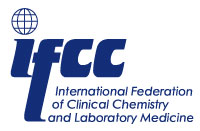
CSCC-SQBC 2024 is held under the auspices of IFCC





